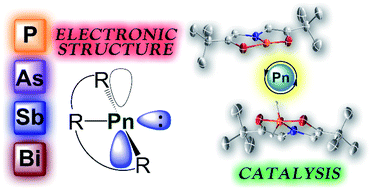Recent developments in the chemistry of non-trigonal pnictogen pincer compounds: from bonding to catalysis
Abstract
The combination of well-established meridionally coordinating, tridentate pincer ligands with group 15 elements affords geometrically constrained non-trigonal pnictogen pincer compounds. These species show remarkable activity in challenging element–hydrogen bond scission reactions, such as the activation of ammonia. The electronic structures of these compounds and the implications they have on their electrochemical properties and transition metal coordination are described. Furthermore, stoichiometric and catalytic bond forming reactions involving B–H, N–H and O–H bonds as well as carbon nucleophiles are presented.



 Please wait while we load your content...
Please wait while we load your content...